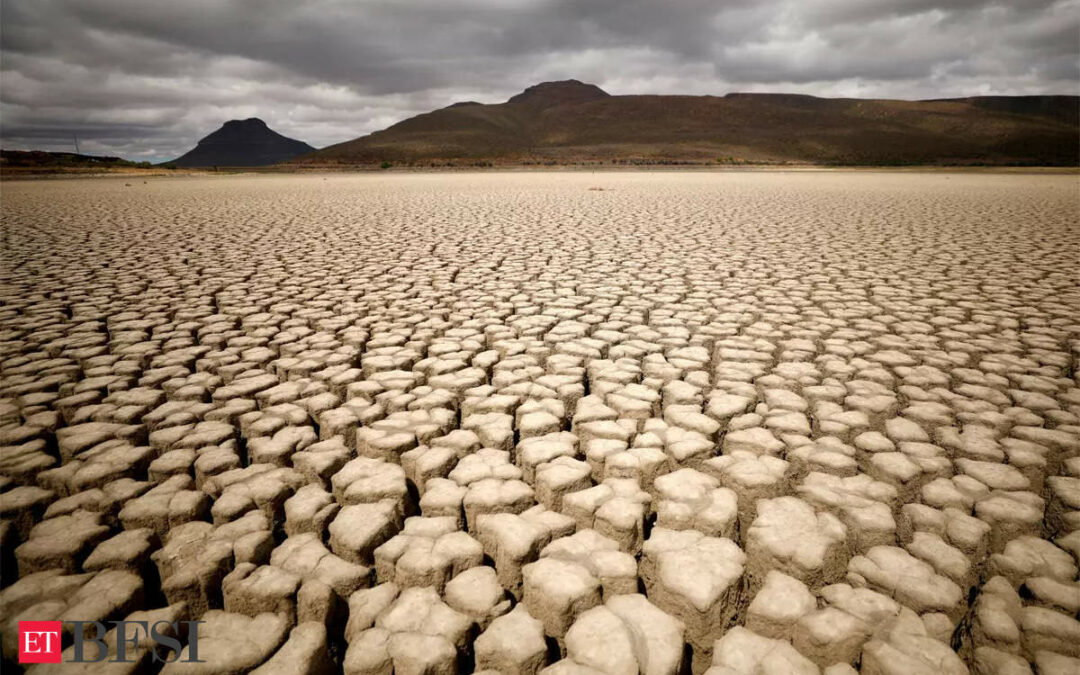The current times present us several challenges where the term ‘poly-crisis’ has come to represent the intertwined challenges from climate, geopolitics, etc. Amongst all these issues, the issue of climate change is all pervasive and is most likely to impact every sphere of our lives –financial, social and global. The impacts of climate change may cause damage to lives and livelihoods for several communities and a challenge of this magnitude demands a cohesive and extraordinary response from the leaders in every field.
Much of the global narrative today on climate risk management is skewed towards ways and means to reduce Green House Gas (GHG) emissions, with a special focus on the top 3-4 industries/sectors emitting the highest emissions. There is now a consensus that climate induced physical risks are expected to increase manifold over the years to come, if there is a failure/delay in expediting the reduction in GHG emission trajectory. The failures or delays in emission reduction will accumulate to a point where urgent and immediate policy actions would be warranted (transition risk) impacting business and operating dynamics.
The common man, especially in emerging and developing economies, is likely to bear the highest brunt on account of climate change. A small shopkeeper who is dependent on daily sales or a daily wage labourer would be adversely impacted through loss of lives and livelihood in the event of floods and cyclones. Their inability to absorb these acute shocks can leave them with no choice but to default on their loan obligations until such time their income generating ability is restored. Severe and more frequent floods or cyclones can lead to financial losses for both the common man and the banks.
Another impact area is the loss on property and assets. Homes/business places built or purchased on low lying areas will be more vulnerable to damage resulting in lower property valuations. The Loss Given Default (LGD) value from such collaterals can be higher. Banks must therefore be cautious on lending to such exposures which may have low realisable value. It is therefore important for the common man to build and enhance his resiliency and adaptation capabilities. Collective action from governments, Regulator and the Banking system to the need of the hour to channelize credit flow after duly factoring these emerging risks.
The financial impact on account of climate induced physical risks can be modelled, only to some extent. The key challenge faced by the industry in modelling physical risks is the unavailability of long term historical data and make a reasonable forecast. The challenge is further exacerbated, in that, replicating historical trends of climate induced natural disasters may not provide a true picture to the future trends. And lastly, climate induced physical risks require modelling over a decadal scale for which industry best practices are yet to emerge. As such, climate risk modelling for physical risks over short term is the larger focus for financial institutions. Over a short term (banks usually define one to three years’ time horizon), default and credit recovery trends on account of climate induced natural disasters (for e.g.: Fani cyclone, Gaja Cyclone etc) can be analysed and incorporated in a bank’s stress testing framework for assessing unexpected losses. To this effect, the Bank may draw reference to RBI guidelines on Stress Testing in developing simple sensitivity models. For mid-term and long term scenario building, there is a global consensus to utilize the scenarios prescribed by Network for Greening the Financial System (NGFS)[1]. The NGFS scenarios provide four specific pathways for interrelationships between physical risks and transition risks.
- Orderly scenarios assume climate policies are introduced early and become gradually more stringent. Both physical and transition risks are relatively subdued.
- Disorderly scenarios explore higher transition risk due to policies being delayed or divergent across countries and sectors. Carbon prices are typically higher for a given temperature outcome.
- Hot house world scenarios assume that some climate policies are implemented in some jurisdictions, but global efforts are insufficient to halt significant global warming. Critical temperature thresholds are exceeded, leading to severe physical risks and irreversible impacts like sea-level rise.
- Too little, too late scenarios reflect delays and international divergences in climate policy ambition that imply elevated transition risks in some countries and high physical risks in all countries due to the overall ineffectiveness of the transition
On the transition risk front, MSMEs are vulnerable to abrupt changes in government regulations and technology changes. Since most MSMEs are dependent on a single product/service, they face the risk of extinction in demand and value due to transition risks. An example could be MSMEs in the business of automobile service and sale of automobile spare parts. With the increasing adoption of Electric Vehicles(EVs) or abrupt policy changes, demand for services from these MSMEs might get lowered/extinct in due course of time. With the loss in demand and income, any funding/credit lines extended to such entities by banks/financial institutions are also open to default risk. Predicting the timing of such impact is a key challenge today.
Climate mitigation and adaptation measures must go hand in hand. While the role of the common man is quite limited in climate mitigation, there is an opportunity and risk to facilitate and channelize funding for climate adaptation to build resiliency for the common man. Capacity building and research initiatives on these aspects is an urgent imperative to all stakeholders.











